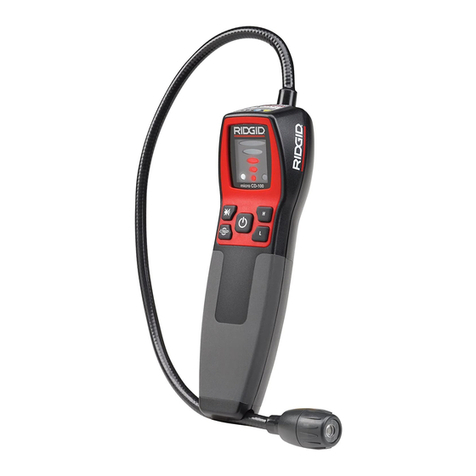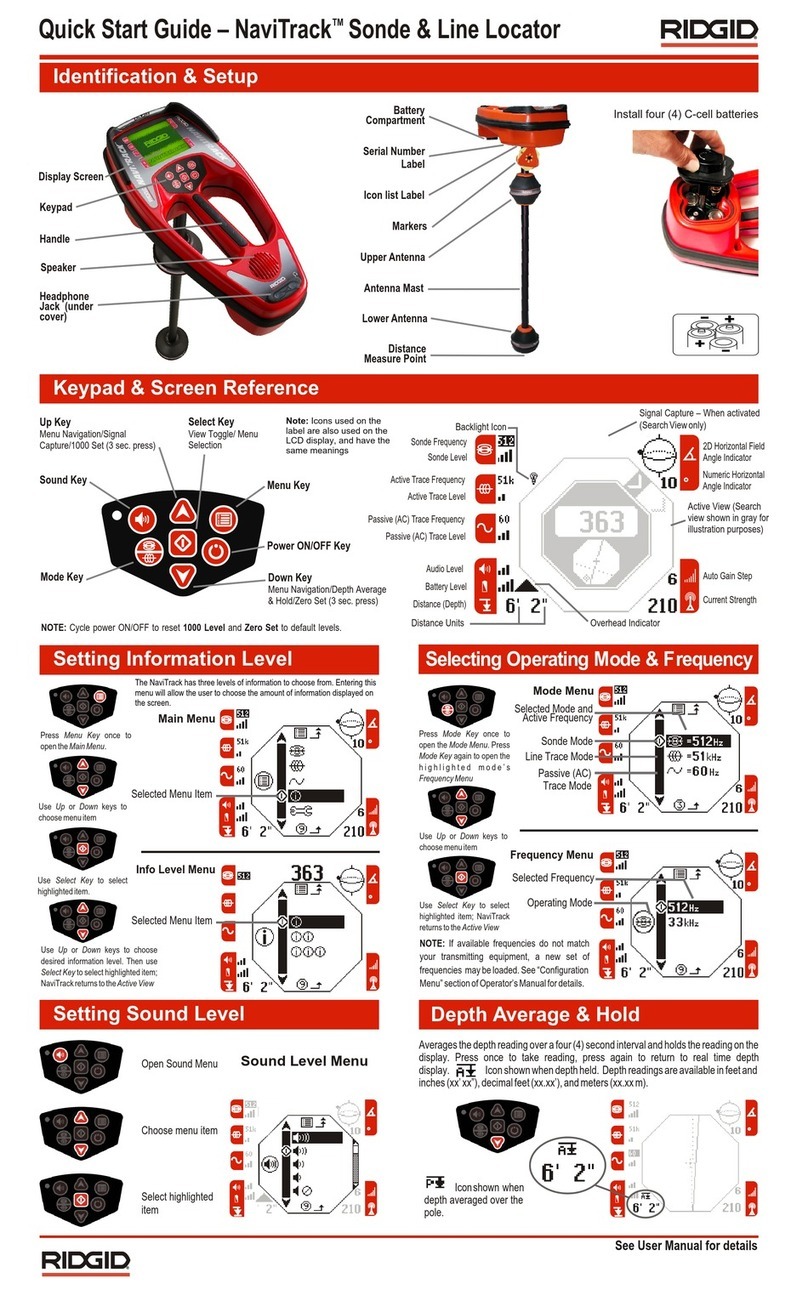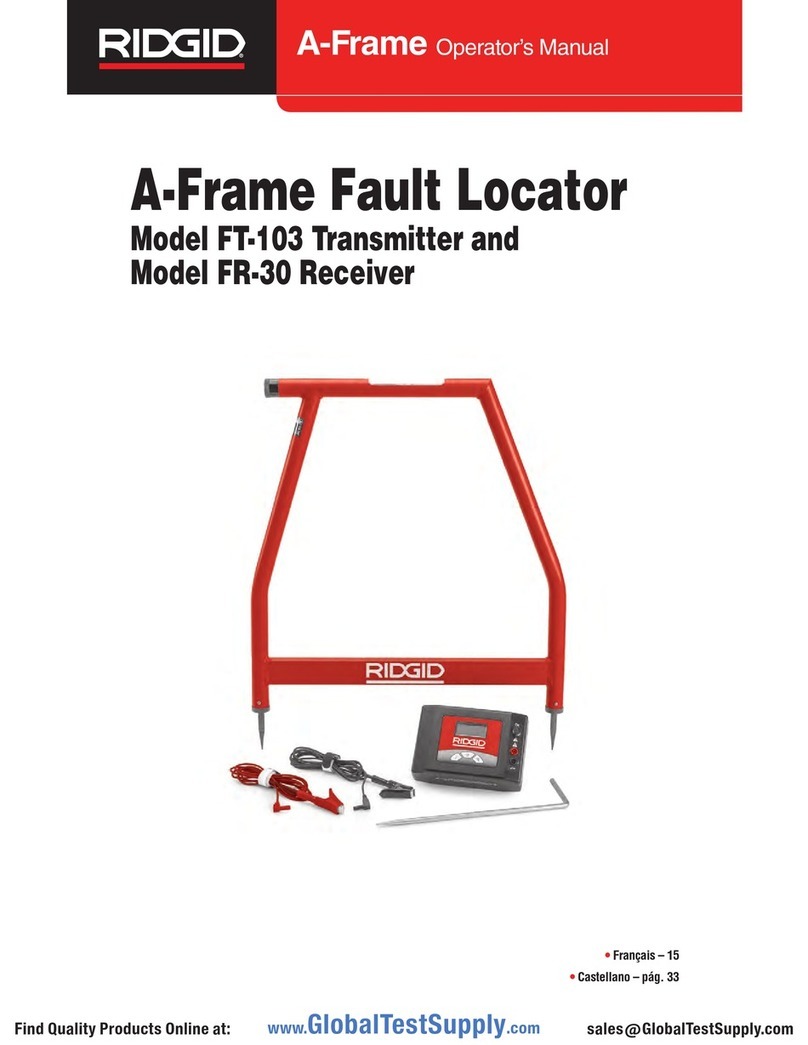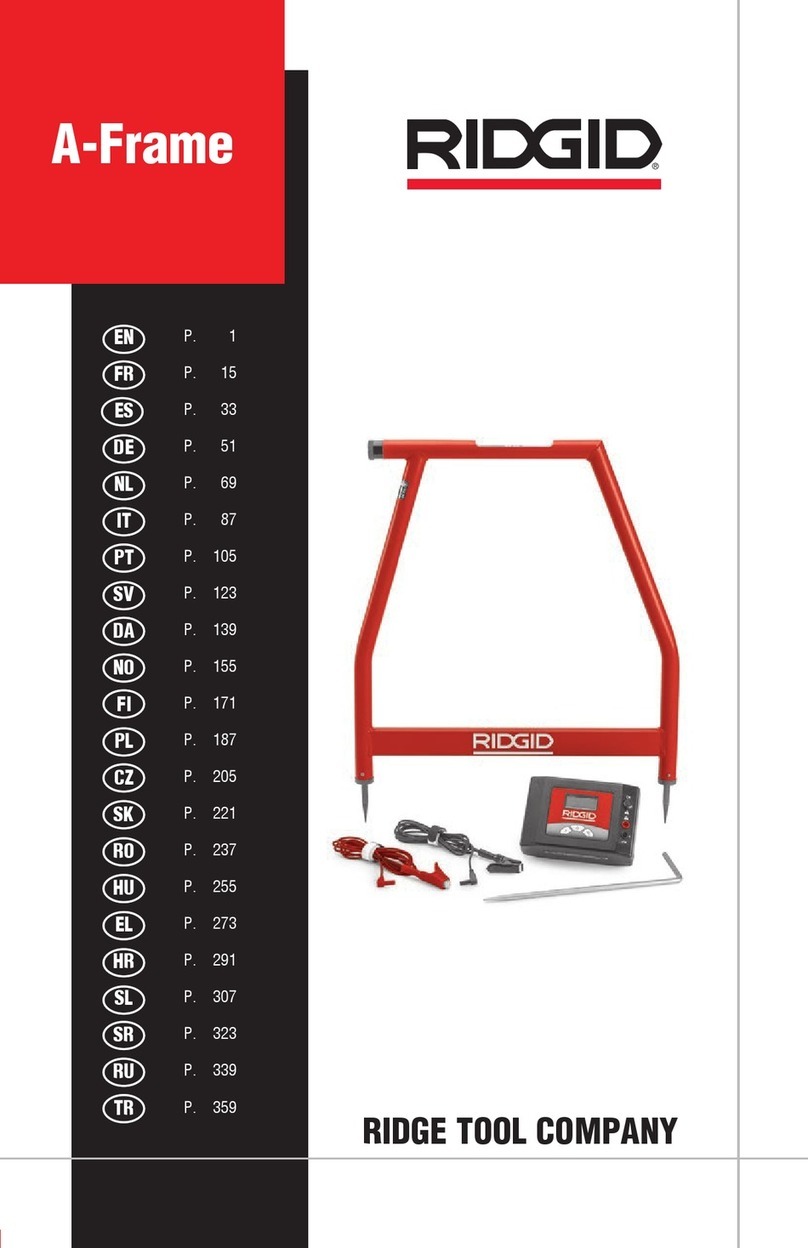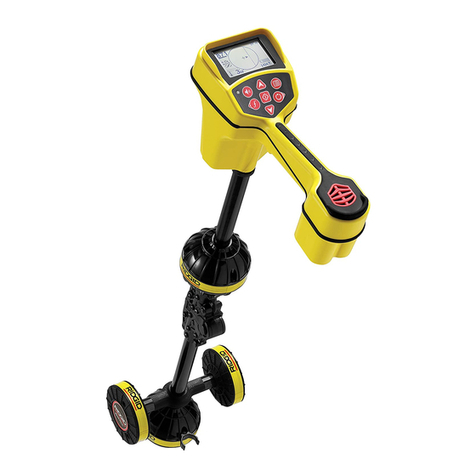
3
NaviTrack Scout
GENERAL SAFETY INFORMATION
WARNING! Read and understand all instructions.
Failure to follow all instructions listed below may
result in electric shock, fire, and/or serious personal injury.
READ THE ENCLOSED SAFETY INSTRUCTIONS.
SAVETHESE INSTRUCTIONS!
The EC declaration of conformity (890-011-320.10) will accompany this
manual as a separate booklet when required.
Battery Precautions
Use only the size and type of battery specied. Do not mix cell
types (e.g. do not use alkaline with rechargeable). Do not use
partly discharged and fully charged cells together (e.g. do not mix old
and new).
Recharge batteries with charging units specied by the
battery manufacturer. Using an improper charger can overheat and
rupture the battery.
cause the battery to explode, so do not dispose of in a re. Some
all applicable regulations.
1. Scout Use and Care
Use equipment only as directed. Do not operate the Scout unless
proper training has been completed and the owners manual read.
Do not immerse the antennas in water. Store in a dry place. Such
measures reduce the risk of electric shock and instrument damage.
Check for breakage of parts, and any other conditions that
may aect the Scout’s operation. If damaged, have the instrument
serviced before using. Many accidents are caused by poorly maintained
tools.
Use only accessories that are recommended by the
manufacturer for the Scout. Accessories that may be suitable for
one instrument may become hazardous when used on another.
Keep handles dry and clean; free from oil and grease. Allows
for better control of the instrument.
Protect against excessive heat.The product should be situated
away from heat sources such as radiators, heat registers, stoves or
other products (including ampliers) that produce heat.I
1.1 Service
Diagnostic instrument service must be performed only by˚
qualied repair personnel. Service or maintenance performed by
unqualied repair personnel could result in injury.
Provide proper cleaning.˚ Remove battery before cleaning. Do not
use liquid cleaners or aerosol cleaners. Use a damp cloth for cleaning.
Conduct a safety check.˚ Upon completion of any service or repair
of this product, ask the service technician to perform safety checks to
determine that the product is in proper operating condition.
Damage to the product that requires service.˚ Remove the
batteries and refer servicing to qualied service personnel under any of
the following conditions:
If liquid has been spilled or objects have fallen into product.˚
If product does not operate normally by following the operating˚
instructions.
If the product has been dropped or damaged in any way.˚
When the product exhibits a distinct change in performance.˚
In any correspondence, please give all the information shown on the
nameplate of your tool including model number and serial number.
1.2 Important Notice
The Scout is a diagnostic tool that senses electromagnetic elds emitted by
objects underground. It is meant to aid the user in locating these objects
by recognizing characteristics of the eld lines and displaying them on the
screen. As electromagnetic eld lines can be distorted and interfered with it
is important to verify the location of underground objects before digging.
Several utilities may be underground in the same area.
Be sure to follow local guidelines.
Exposing the utility is the only way to verify its existence, location and depth.
Ridge Tool Co.,itsaliatesandsuppliers,willnotbe liableforanyinjury orany
direct, indirect, incidental or consequential damages sustained or incurred by
reasonofthe useoftheScout.Severalutilitiesmaybe underground inthesame
area. Be sure to follow local guidelines.
2. Introduction to the Scout
The ScoutTM sonde and line locator uses multi directional antennas and
advanced processing to make pinpointing sondes and tracing buried utility
lines fast, accurate and easy.
2.1 What are Its Unique Features?
Scout’sadvancedtechnologygivesseveraluniquefeaturesoverconventional
locators:
2.2 What Does It Do?
The Scout is used above ground to sense electromagnetic elds emitted
from underground or hidden lines (electrical conductors like metal wires
and pipes) or sondes (actively transmitting beacons). When the elds are
simple and undistorted, then the sensed elds are representative of the
buried object. The Scout locates conductive objects emitting a eld; it does
not directly sense underground objects.
Electrical elds emitted by buried objects can be of two types; the rst type
is emitted by long conductors such as energized wires, inspection camera
pushcables or pipes.
These objects produce a long cylindrical eld and this is often referred to as
“Line”tracing.
EN
NaviTrack Scout
Operating Instructions
Original Instructions - English
